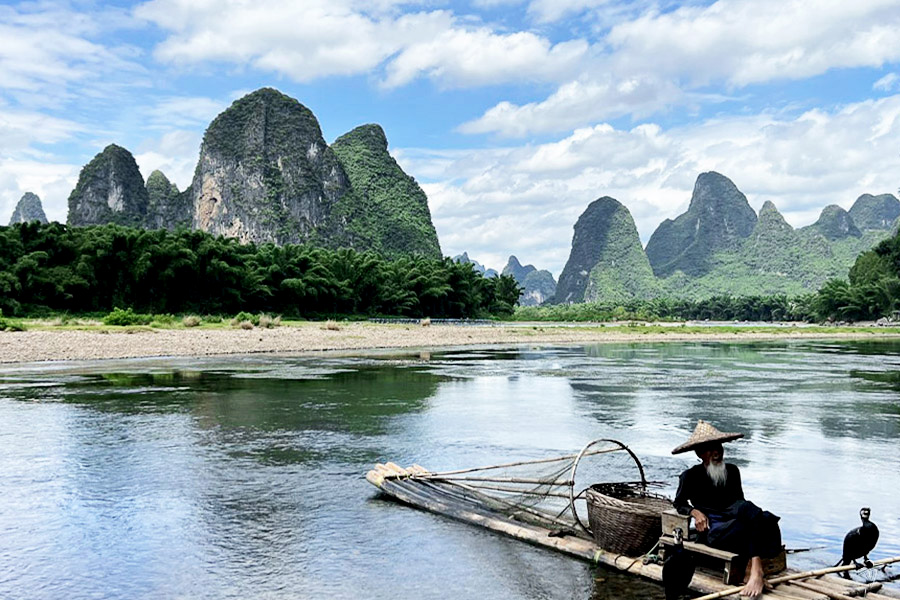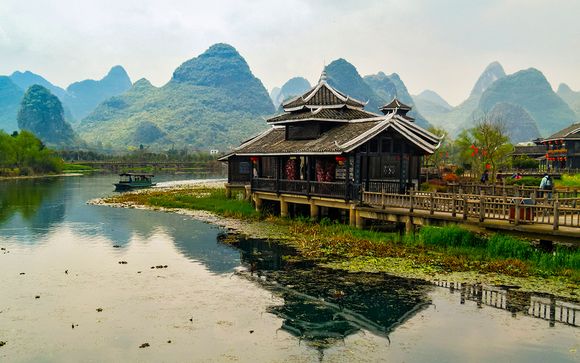1. Research Before You GoTip: Know what each region is known for. Suzhou is one example. It is known for its silk. Jingdezhen, for its porcelain and Tibet for its thangkas.
Pros: You can concentrate your efforts on shopping and cut down time.
Con: You must be familiar with highlights in the region.
2. Shop Locally to Guarantee Genuineness
To ensure authenticity and high-quality To ensure authenticity and quality, buy items directly from the source point.
Pro: Reduces the chance of copyright goods and helps local artisans.
Con: Needs to travel to areas in rural areas or other less well-known tourist destinations.
3. Visit the Workshops of Artists
Instead of buying from generic shops, look for small workshops or hubs of artisans.
Pro The software lets you know more about the art and purchase directly from artists.
Con: The price for handcrafted items is more expensive and isn't easy to bargain.
4. Find out about the significance of culture
Find out the cultural history of objects like jade carvings, cloisonne and calligraphy.
Pro: It makes you appreciate the product and gives them more meaning.
Cons: It might take a while to fully comprehend the cultural subtleties.
5. Check the Quality with Care
To ensure you're satisfied with the quality, make sure that items like tea, ceramics or embroidery conform to your expectations.
Pro: Prevents disappointments by ensuring you receive what you pay for.
Cons: You'll need direction or experience to understand what is a high-quality product.
6. Beware of mass-produced goods
TIP: Find unique hand-crafted products rather than replicas that are mass-produced.
Pro: You'll bring home an extremely precious and special souvenir.
Con: Quality workmanship is expensive and hard to come by.
7. Compare Prices
Tip: Comparing prices of the same special item across multiple shops and stalls is a great idea.
You can determine reasonable price ranges so that you don't get charged too much.
Con: Time-consuming in big markets, and especially.
8. Buy Tea from trusted vendors
Tip Tips - In areas like Hangzhou or Fujian there are trusted Tea Houses in Longjing and Tieguanyin.
Pro: Assures premium quality and authentic.
Con: Good tea is expensive and is difficult to verify for those who are new.
9. Local Customs
TIP: Some sellers could expect or even encourage you to bargain.
Brings a touch of culture to your shopping.
Con: Uncertainty about customs can cause awkward interactions.
10. Pack Carefully
You should plan the way you'll transport heavy or fragile regional specialty foods like silk or ceramics home.
Pro: Your items will arrive in pristine condition and unharmed.
Cons: Added logistical issues and potential shipping cost.
Benefits of shopping for Regional Specialties
Unique Souvenirs - Regional specialties are unique and can't be found in any other place.
Cultural Immersion. When you purchase local products and products, you can connect with the area’s heritage and craftsmanship.
Support for Artists: Direct purchases from artisans help local economies.
Pros and Cons of Shopping Regional Specialties
Genuineity: The risk of buying counterfeits or versions of lower quality.
Moving large or fragile items can be a challenge.
Locally-sourced products are typically expensive, especially handcrafted products.
These guidelines will enable you to purchase memorable items on your trip to China. View the most popular explore this top-rated location for blog tips including chaka salt lake, top three buddhist temples in chengdu, shanghais winter wonderland festivals lights and fun, luoyang peony and wangcheng park, the song of everlasting sorrow the famous long narrative poem, chinese kites a phoenix shaped kite, eating in guiyang, a wonderful landscape painting lijiang river, eating in guilin, chinese kites a phoenix shaped kite and more.

Top 10 Tips For Visiting Chinese Temples Without Paying Fees
1. Entertainment Fees: The most famous temples charge a fee for entry, which could range from Y=20 or more to 200 Y. It's possible to estimate your budget by researching the cost of tickets.
Pro helps you avoid unexpected costs and help you prepare the appropriate amount of digital or cash.
Con: You could be charged unexpected costs, including extra exhibition costs.
2. Bring Cash or Electronic Payments
Certain temples will only accept cash, or the most popular Chinese payment methods like WeChat Pay or Alipay.
Pro: Ensures smooth entry without payment delays.
Cons: There are a few options for foreigners who do know how to make use of the digital payment app.
3. Find signs that say "Photography"
If you're not sure if photography is allowed, always look for indications. Many temples do not allow photography in sanctuaries or in close proximity to sacred artifacts.
Pro: Stops accidental infringement of rules or breaking.
Con: Certain rules differ in particular areas of a temple. Paying extra attention is essential.
4. Avoid Flash Photography
Even in places that allow you to take photographs, be cautious about using flash since it could cause damage to artifacts and disturb worshipers.
Pro: Preserves temple's art and the surrounding.
Con: Low light can result in less than perfect photographs.
5. Respect the privacy of worshippers
Tip: Avoid taking pictures of people praying or engaging in religious rituals unless you have their consent.
Pro Respects personal space and cultural sensitivity.
Con You're ability to capture the atmosphere of a temple may be limited.
6. Follow Drone Restrictions
Tips. Drones are usually not allowed in temples. You should check the local regulations for using one to shoot aerial images.
Pros: It's safe from fines and confiscation of your drone.
Cons: The limited range of angles for photography makes it difficult to create unique shots.
7. Plan for Additional Charges
A suggestion: Some temples charge an extra fee to use professional equipment, such as DSLRs or Tripods.
Pro: Make sure you capture high-quality images legally.
Con: Increases overall travel expenses.
8. Dress sensually
Tips: Dress code is crucial in temples. Inappropriate clothing could cause being denied entry or a refusing entry.
Pro: This shows respect for the environment of religion and helps you to blend in.
Con: May need extra preparation, particularly during hot weather.
9. Avoid Crowded Times when Taking Photographs
TIP: Make sure to travel early in the morning, or later in the afternoon to stay clear of crowds. You'll be able to get better pictures with less obstruction.
Enhances your photography and experience.
Con: This could need you to change your schedule. It is not always practical.
10. If Uncertain, Ask Permission
Check with temple staff or signs on rules if you are unsure.
Pro helps you to avoid inadvertently breaking rules.
Con: Language barriers might make communication difficult.
Pros and cons of observing fees and photography rules
Cultural Respect: Respect the local customs, religions and other aspects of culture.
Artifact Preservation: Helps protect fragile artwork and structures from damage.
Positive Experiences : Avoid confrontations either with temple staff or worshippers.
Legal Compliance: Guards you against penalties or fines in the event that you violate the rules of photography.
Cons of Fees as well as Photographic Rules
Additional fees Additional costs: Entry fees and photography permits could add up.
Limits on imagination. Limitations could stop you from taking that perfect photo.
Language Barriers: Inability understand local signs or to communicate with staff.
The time-consuming process of researching and preparing for the future requires additional effort.
You can enjoy a peaceful fun, relaxing and respectful visit to China's temples if you adhere to the rules and regulations. It will also help protect their spiritual and cultural integrity. Have a look at the recommended find travel ideas for this location for website advice including zhangjiajie tour maps, temple of confucius one of the three largest ancient architectural complexes, shopping in fuzhou, honey lake country club, zhangjiajie tour maps, naked marriage in china the most fashionable wedding style for the 1980s, shaoxing wine the best yellow wine in china, eating in guilin, eating in shangri la, great tang all day mall xian.html and more.
